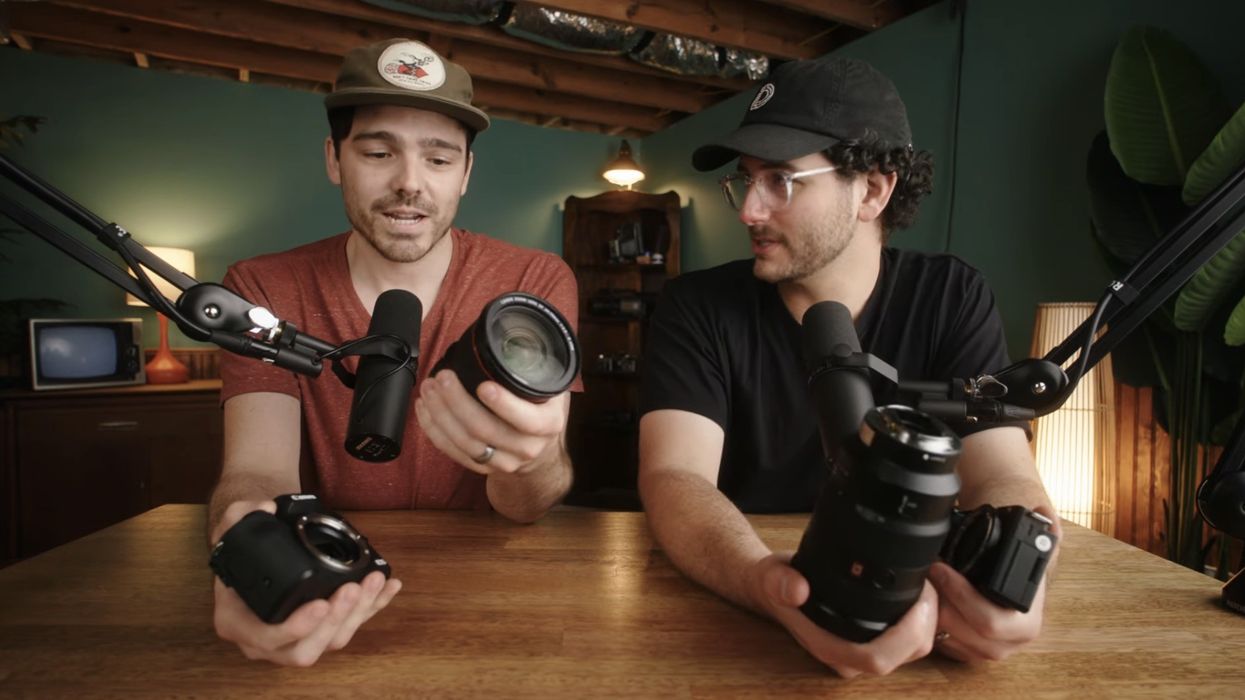Is Sony’s ZV-E10 or Canon’s M50 the Better Budget YouTube Camera?
Exploring the differences between these two popular YouTube starter cameras.

Shooting video content specifically for YouTube is somehow both really easy and really hard. It’s a bit of a head-scratcher, for sure.
On one hand, any camera that shoots Full HD should be more than all right to use, as most consumers of YouTube content are watching on their smartphones (or smaller laptop or tablet screens).
On the other hand, there are so many great cameras and great content creators out there on YouTube, if you shoot less-than-quality footage it will certainly make your content stand out for shoddiness. So, for one just starting out with YouTube content creation, what are you to do?
The answer basically comes down to finding the best budget digital video camera available. And, truth be told, the answer for the best budget YouTube camera these days really comes down to one of two cameras… the Sony ZV-E10 and the Canon M50.
The guys from Soundstripe dive into the debate below.
The Sony ZV-E10 vs. the Canon M50
Luckily we have some real YouTube content creating sleuths on the case for us. Chris Haggerty from Soundstripe (a royalty-free music licensingand SFX company) and Dave Maze (previously of Indy Mogul fame) go in-depth debating the pros and cons of each option.
It’s fitting that they chose these two cameras for the video, because if you do some of your own research, you’ll quite often see both the ZV-E10 and the M50 consistently listed as some of the top cameras for YouTube specifically.
And it’s for good reason, too, as they pretty much hit all the marks for what you currently need to produce quality-looking content specifically for YouTube these days. Both are capable of recording quality 4K footage internally, both offer high frame rate capability, both do quite well in low light situations, for vloggers they both have nifty flip-out screens, and—most importantly—they both cost well below $1,000.
Let’s further break down both options a bit more.
The Canon M50
Starting with Chris’ selection. The Canon M50, which you can get for $699 with a kit lens, is really a great deal.
This is in part because the Canon M50 MK II has come out and driven the price further down—even though, as they point out in the video, they’re basically the same camera.
The Canon M50 has a 24.1MP APS-C CMOS sensor which works with Canon’s DIGIC 8 image processor to record UHD 4K and HD 720p120 video. It’s quite capable in low light situations and should give users all the basics of what you might expect in a classic DSLR-style Canon camera, but with that mirrorless design and at a super accessible price point.
Here are the full specs and features:
- 24.1MP APS-C CMOS Sensor
- DIGIC 8 Image Processor
- 2.36m-Dot OLED Electronic Viewfinder
- 3.0" 1.04m-Dot Vari-Angle Touchscreen
- UHD 4K and HD 720p120 Video Recording
- Built-In Wi-Fi with NFC, Bluetooth
- Dual Pixel CMOS AF
- Extended ISO 51200, 10 fps Shooting
- Combination 5-Axis Image Stabilization
- EF-M 15-45mm f/3.5-6.3 IS STM Lens
Price with lens: $699
The Sony ZV-E10
On the other hand, looking at Dave’s selection—the Sony ZV-E10—we have a camera that is perfect for vloggers and YouTubers alike. It’s really a perfect starter Sony camera and continues the strong legacy of the original Sony ZV-1.
As Dave points out, though, the ZV-E10 is actually a bit of a step up from previous Sony cameras (like the Sony a6300) because it’s updated its color science and it should look even closer to what you might get with a newer, higher-end Sony camera (like the Sony Alpha 1, which is a bit of a stretch, but you get our point).
The ZV-E10 has a 24.2MP APS-C Exmor CMOS sensor capable of UHD 4K video at up to 30p (and Full HD up to 120p) along with solid auto-focus, signature Sony low-light capability, and a nice 3.0” side flip-out LCD touchscreen. Again, everything you need to start YouTubing today.
Here are the full specs and features:
- 24.2MP APS-C Exmor CMOS Sensor
- UHD 4K30p and Full HD 120p Video
- 3.0" Side Flip-Out Touchscreen LCD
- 425-Point Fast Hybrid AF
- Up to 11-fps Shooting, ISO 100-32000
- Real-Time Eye AF and Tracking
- Background Defocus & Face Priority AE
- Directional 3-Capsule Mic and Windscreen
- Headphone and Microphone Ports
Price with lens: $698
Which One Is Right for You?
Ultimately, as the guys break down in the video, these two cameras represent a version of the best and most affordable cameras out there for YouTube content creation. That being said, there’s really no wrong answer to which camera is the best YouTube camera for you.
However, if you do want to spend well less than $1,000 and have all the 4K capabilities and features that you might expect from legacy brand names like Canon and Sony, you’d be hard-pressed to find better budget options out there.
As for which one to choose between the two, it really comes down to if you’re more of a Chris or more of a Dave—and judging from their breakdowns, both seem like solid options.
Which camera would you pick? Let us know in the comments!
Check out weekly specials, deals, and rebates: Pro Video Gear, Pro Audio Gear, Lighting
Source: Soundstripe













